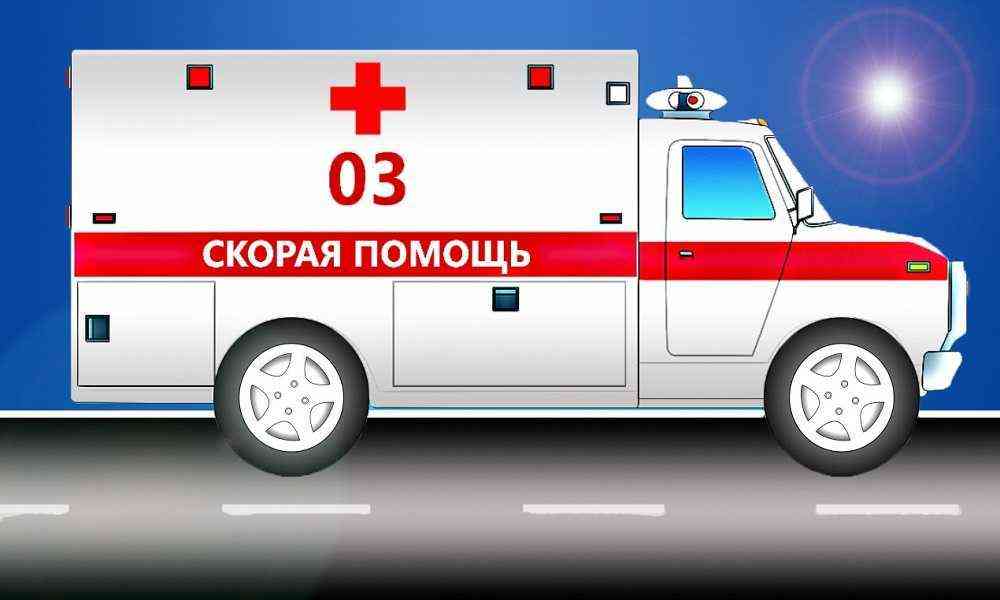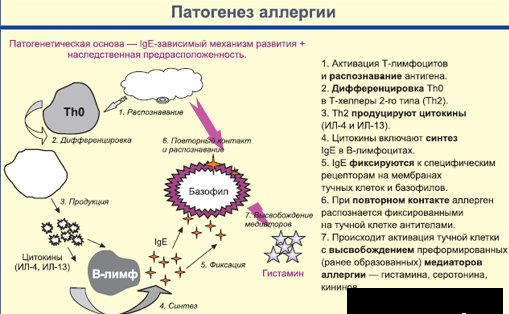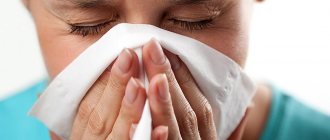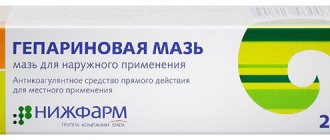Since shortness of breath due to allergies is a serious marker of the development of anaphylactic shock or acute respiratory failure, which can lead to death, it is necessary to understand the definition of this term.
Allergies can manifest either slowly or very quickly. In the first case, as a rule, the patient’s general well-being does not suffer, but in the second, symptoms develop within a few minutes.
The danger of this situation is that a symptom such as shortness of breath due to allergies can be a formidable harbinger of suffocation and even anaphylactic shock. In the same case, if doctors have a case of already developed anaphylactic shock, then shortness of breath and breathing disorders were present in more than 70% of cases.
What to do if you have difficulty breathing due to allergies
More than 40% of the world's inhabitants suffer from various manifestations of allergies. Possible reasons for the increase in the prevalence of this disease are scientific and technological progress, environmental pollution, and a decrease in the level of well-being of the population.
Breathing disorders due to allergies are associated with swelling of the mucous membrane of the respiratory tract, as well as with a reflex contraction of the smooth muscles of the larynx and bronchi. First, you need to understand what allergies are and why such changes occur in the respiratory tract?
Allergy is a disease of the immune system, manifested in the form of a hypersensitive reaction , which is triggered by immunological mechanisms when the body comes into repeated contact with the allergen. Intolerance can occur in the form of an immediate or delayed hypersensitivity reaction.
What is the mechanism of development of an acute condition?
Upon initial contact with an allergen ( antigen ), it is “examined” by special cells, after which specific antibodies ( IgE immunoglobulins ) are produced in the body.
Antibodies accumulate and their excessive secretion occurs. IgE is fixed on the surface of mast cells. While antibodies are being synthesized, the allergen has already “left” the body and therefore we do not observe any reaction.
In case of repeated contact, IgE reactivation occurs, as a result of which various allergy mediators (histamine, leukotrienes, prostaglandins, tryptase, etc.) are released from mast cells.
When exposed to them, vasodilation occurs, then the permeability of the vascular wall increases with the release of plasma into the tissue and the development of edema of the mucous membranes and spasm of the bronchial muscles.
And then the clinical picture of the allergy appears, namely: itching, shortness of breath, anaphylaxis, allergic conjunctivitis, etc.
Reasons contributing to the occurrence of an attack
- Exposure to various allergens (pollen, tobacco smoke, house dust, chemical irritants with a strong odor, animal dander, fungal spores, etc.)
- Frequent respiratory infections.
- Intolerance to certain medications (there is no drug that could not cause an allergic reaction);
- Severe stress.
- Foreign body.
- performing medical procedures (bronchoscopy)
Symptoms of breathing problems
- Dyspnea.
- Cough.
- Feeling of lack of air, suffocation (exhalation is often difficult)
- Noisy wheezing occurs (due to narrowing of the lumen of the larynx or bronchi)
- Paleness of the skin.
- Tachycardia.
- Participation in the act of breathing of auxiliary muscles: inflation of the wings of the nose, retraction of the intercostal spaces; swelling of the veins of the neck.
Other allergy symptoms are also possible: itching, rash, sneezing, skin swelling or swelling, loss of consciousness, etc.
Diagnostics
If you have at least one of the symptoms, you must consult an allergist to make a diagnosis, carry out diagnostic measures, and also to prescribe treatment.
To identify the allergen, specific tests must be performed:
- Skin tests (during which the patient is injected intradermally with a small amount of allergens, then, after some time, the sample is evaluated and the allergen that can cause an allergic reaction is determined);
- Provocative tests (carried out only in a medical institution, the patient is injected with an allergen, which, according to the doctor’s assumption, causes an allergic reaction, after confirmation of this test, appropriate preventive measures and treatment are prescribed)
- Skin tests (used for contact dermatitis)
- Determination of Ig E in the blood (calculation of the total amount of Ig E, as well as detection of specific antibodies of immunoglobulin Ig E).
What to do during an attack?
- Call an ambulance.
- Stop exposure to allergen
- Provide access to fresh air (if the allergen is, for example, pollen, then it is necessary to bring the patient into the room)
- Remove clothing that interferes with normal breathing (unfasten buttons, loosen belt)
- Introduce an antihistamine: tavegil, erius, desal, telfast.
- If the cause of shortness of breath is stress, it is necessary to use sedatives.
- The use of glucocorticosteroid drugs is possible in severe cases.
- During the period of remission and after an allergy diagnosis, it is possible to use a method such as specific immunotherapy. It consists of introducing small doses of the allergen into the body at first, and then gradually increasing them. This therapy is aimed at developing the body's tolerance to the allergen. Sometimes, several courses of this therapy are necessary to achieve the goal.
- It is also possible to use plasmapheresis . Plasma is a kind of “sponge” containing Ig E and inflammatory mediators. During the treatment procedure, the amount of these substances decreases, which improves the patient’s condition. This procedure is prescribed for severe allergies.
Prevention
The most important thing is to eliminate contact with the substance that causes the allergy.
If it is house dust, maintain cleanliness and frequent wet cleaning, getting rid of old carpets, down and feather pillows.
If you are intolerant to certain medications, you must replace them with safer ones. If you are allergic to pollen, limit going outside during the flowering period.
You also need to follow some recommendations:
- Maintain a healthy lifestyle (if possible, ensure a balanced diet, active recreation, avoid smoking, alcohol, and drugs)
- Avoid stress and overwork.
- Contact your doctor promptly for advice.
Source: https://allergiyas.ru/chto-delat-esli-pri-allergii-tyazhelo-dyshat/
Who gets sick most often?
Allergic rhinitis and bronchial asthma can be constant or periodic. It all depends on the factors that influence the development of the pathology: heredity, frequent infections, harmful production.
The disease can be provoked by a polluted environmental situation, strong odors, and nervous shock.
An attack of suffocation can develop in people of any age. It also happens in babies older than 1 year. Often the development of the disease is aggravated by heredity: close relatives of those affected suffer from allergies or asthma. Asthma in one parent determines the likelihood of a child developing it by almost 30%; if both parents have it, the chance of developing it increases to 70%. Often allergic suffocation is similar to chronic bronchitis, and treatment is carried out incorrectly. When a child gets sick with obstructive bronchitis 4 times a year, you need to urgently consult with specialists and begin examination and treatment.
According to the severity of the disease, they are distinguished:
Mild (intermittent) form: it is characterized by daytime attacks 1 time per week, night attacks no more than 2 times a month. Mild persistent form: 1 time per week or per day. Moderate: attacks day and night. Severe: asthma attacks several times a day.
The disease is usually diagnosed at an appointment with a therapist or pediatrician, but to confirm the diagnosis, consultations with specialized specialists are prescribed: an allergist and an immunologist. The examination begins with identifying the allergen that caused the disease. An anamnesis is collected, the patient undergoes allergy tests, and an X-ray examination is performed. Once the pathogen is identified, comprehensive treatment is prescribed.

It's hard to breathe if you have allergies, what to do?
Allergy is a reaction of the immune system to the influence of any irritant that comes from outside or formed inside the body.
This substance may be:
- viruses;
- bacteria;
- chemical substances;
- food products;
- pollen from plants or trees.
Allergies, or more precisely, 85% of the entire population suffer from allergies.
An inadequate reaction of the body in response to allergens is easier to prevent than to cure.
Preventive measures will be effective when the causes and symptoms of the disease are known to the patient and loved ones.
In this case, you can competently provide medical assistance and relieve asthma attacks due to allergies.
Possible reasons
The main factor in the development of attacks are irritants, the influence of which causes an allergic reaction.
The main active agents may be:
- medications;
- products;
- plant pollen;
- poison of stinging insects;
- physical factors - cold;
- foreign proteins included in vaccines or donor plasma.
How does an attack manifest itself?
Signs of an onset attack include:
- itching and redness of the skin;
- vomiting, nausea;
- lacrimation;
- persistent cough
- swelling of the mucous membranes;
- chills or fever;
- lethargy or, conversely, excitement;
- low blood pressure numbers;
- change in consciousness, up to loss.
The most dangerous forms of an allergic attack: laryngeal edema and anaphylactic shock.
In this case, the person experiences:
- severe difficulty breathing;
- clouding of consciousness up to its loss;
- the skin turns red;
- It becomes difficult to breathe with allergies within a few seconds.
Help needs to be provided quickly and efficiently. Otherwise, negative consequences (even death) are possible.
Emergency care for anaphylactic shock:
- try to eliminate the effect of the allergen, isolate the patient if possible;
- ensure access to oxygen if possible;
- give or administer an antihistamine intramuscularly;
- lay the victim on a horizontal, hard surface;
- use any distraction (a bottle of warm water placed on your feet);
- if symptoms increase, call an ambulance.
Laryngeal edema
This is a rapidly developing edematous process in the larynx, leading to a narrowing of its lumen.
With the development of edema, the following is observed:
- difficulty breathing when inhaling;
- feeling of a foreign body in the throat;
- hoarseness of voice up to aphonia;
- swelling spreads quickly to the entire face.
This is an acute condition, so you need to very quickly:
- raise the victim's head;
- Place an ice pack (or just a cold object) on the neck or chest area;
- call an ambulance or go to the hospital yourself.
Causes of difficulty breathing
Factors causing difficulty breathing:
- heart disease (arrhythmia, congenital heart defects, heart attack);
- problems with the pulmonary system: the presence of blood clots in the pulmonary arteries, chronic bronchitis, emphysema, pneumonia, pulmonary hypertension;
- allergy;
- rising to great heights;
- chest injuries;
- emotional stress.
When difficulty breathing develops, it is impossible to inhale and exhale normally, concentrate quickly and immediately answer the question, so short phrases are used in conversation.
Symptoms of difficulty breathing:
- pain and feeling of constriction in the chest area;
- it is not possible to sleep in a lying position (only sitting);
- When breathing, wheezing is heard in the lungs, a feeling of a lump in the throat.
If one of the symptoms is observed against the background of normal breathing: you should seek help from a doctor.
Only a specialist can identify the cause of development and prescribe competent treatment.
Why does shortness of breath occur with allergies? The answer is here.
Shortness of breath - how to alleviate the condition
Shortness of breath is a symptom of many diseases.
The main signs of shortness of breath are:
- feeling of suffocation;
- increased respiratory rate;
- noisy breathing.
The main reasons for the development of shortness of breath may be:
- heart disease;
- diseases of the bronchopulmonary system;
- anemia.
Shortness of breath may be:
- inspiratory (difficulty breathing);
- expiratory (occurs when there is difficulty in exhaling);
- mixed character.
To know what and how to help during an attack, it is necessary to identify the cause.
Medicines for shortness of breath are prescribed only by a doctor.
Symptoms of a asthma attack due to allergies
An attack of suffocation (asphyxia) is manifested by fear of death and the inability to take a deep breath, tearing, swelling and redness of the face.
If an attack develops, the cause of which is an allergen, it is necessary to give the victim any of the following antihistamines:
If an attack of suffocation is associated with the ingestion of a food product, then in this case you need to take an adsorbent (activated carbon, polysorb, smecta) and an antihistamine.
Remember that in severe cases it is important to provide first aid, which can save lives, without waiting for paramedics to arrive.
The condition has improved: what next?
If an allergic attack of suffocation develops, it is necessary to stop the action of the allergen.
If a chemical substance acted as an irritant: provide access to fresh air or move the victim outside.
If the allergen is plant pollen, then it is better to place the patient indoors.
Drinking plenty of fluids promotes the rapid removal of the allergic substance from the body: give the victim warm tea.
Difficulty breathing, runny nose and nasal congestion are symptoms of a cold, or the body’s reaction to some irritant.
Drying of the mucous membrane of the nasopharynx causes a disruption of protective functions.
To prevent this from happening, you must:
- timely treatment of ENT diseases;
- during epidemics, use protective equipment;
- exclude long-term treatment using vasoconstrictor drops;
- perform necessary surgical interventions in a timely manner;
- maintaining a healthy lifestyle: eating foods rich in vitamins, maintaining a proper daily routine, strengthening the immune system;
- At the initial signs of illness, contact specialists in a timely manner.
Development of bronchial asthma
As a result of pathologically altered bronchial reactivity, clinically manifested by attacks of suffocation, the development of bronchospasm and swelling of the mucous membrane, bronchial asthma develops.
This disease in most cases (50–80%) is inherited.
The main manifestation of the disease is narrowing of the pulmonary ducts.
Exacerbation of the disease occurs as a result of inflammation of the respiratory tract, disruption of ventilation processes and exhaustion of the respiratory muscles, under the influence of allergens or occupational factors.
In the classical version, the development of an asthma attack is preceded by an aura, manifested by:
- frequently repeated sneezing;
- coughing and expectoration of glassy sputum at the end of the attack.
What does a rash on the bottom of a 2-year-old child mean? Read in the article.
Do red spots always appear on the legs when a child has allergies? Further.
Allergy prevention
- If the cause of the disease has been established, stop contact with the allergen if possible.
Carrying out an annual course of specific immunoprophylaxis with pollen allergens under the supervision of an allergist contributes to the development of a lasting therapeutic effect; - if a bacterial allergy develops, all types of hypothermia are contraindicated (long walks in the cold, wiping with snow, dousing);
- performing a special set of exercises, dousing with water, following a diet and hardening the body in consultation with an allergist;
- timely treatment of chronic diseases in the body.
There are many reasons leading to impaired breathing.
In each case, you need to contact a specialist, find out the source of the problem and undergo an examination.
Do not forget that free breathing is a gift and should not be neglected.
Allergy is the most common pathology in the world. One form or another of this disease is diagnosed in every third inhabitant of the planet. Manifestations of an allergic reaction are varied. Why do shortness of breath occur in many cases and is it difficult to breathe with allergies? How to deal with this violation? Let's talk about this below.
Source: https://dyhanie-legkih.ru/voprosy/tyazhelo-dyshat-pri-allergii-chto-delat
Possible reasons
The main factor in the development of attacks are irritants, the influence of which causes an allergic reaction.
The main active agents may be:
medications; products; plant pollen; poison of stinging insects; physical factors - cold; foreign proteins included in vaccines or donor plasma.

Allergy makes it hard to breathe
Symptoms of an allergic reaction can vary in severity and nature.
One of the most severe consequences of irritation of the body is suffocation due to allergies. When an allergic attack occurs, it becomes difficult for a person to breathe.
At this moment there is not enough air, the feeling of anxiety increases. The condition is dangerous because it can lead to death. Many people do not know what to do when such a symptom occurs.
It is important to find out how to cope with the manifestations of an allergic reaction.
Why does the reaction occur?
When an irritant enters the body, an allergic reaction occurs. If small dust particles, dry medicinal mixtures, cosmetics, and food products act as a negative factor, then respiratory tract damage may occur. If the effect is not severe, then symptoms of hay fever, allergic rhinitis or conjunctivitis may occur.
With severe lesions, a person may experience swelling of the mucous membranes.
Narrowing often occurs:
- larynx;
- nasal passages.
When air flow is obstructed, it becomes difficult for a person to breathe. For some, this condition is frightening; many do not know what to do. With swelling of the larynx, complete asphyxia and death often occur. Attacks when a person suffocates can occur in both adults and children.
Symptoms of suffocation begin with shortness of breath. A person can feel it even in a calm state. And with further damage to the respiratory system (for example, when inhaling tobacco smoke, exhaust gases), it becomes difficult to breathe, and suffocation occurs.
If a person experiences suffocation and does not know what to do, it is important to urgently call an ambulance.
Otherwise, this condition can be fatal.
How does suffocation manifest?
Alarming symptoms when attacks appear should alert a person. He needs to know what to do when this or that sign appears. If a child or adult loses the ability to breathe, this is expressed as:
- wheezing;
- wheezing that is clearly audible;
- cough;
- shortness of breath;
- feelings of lack of oxygen;
- coma in the throat.
In addition to breathing problems, other changes occur. Cold sweat may break out throughout the body.
The surface of the skin changes color to pale.
Poor circulation may also occur in the lips, ears, tip of the nose and fingers. These areas become bluish in color. Attacks occur most often at night. If a person experiences stress or anxiety due to allergies, then suffocation may become more frequent.
Also, during the period when serious symptoms appear, an allergy sufferer needs to reduce the level of physical activity.
Choking can have serious consequences.
The severity depends on how severe the allergic attack was when emergency care was provided, as well as on the causes of its occurrence.
A child may experience particularly strong symptoms of suffocation. Unlike adults, children are much more difficult to tolerate breathing difficulties. In this case, suffocation can lead to death.
It is important not only to call an ambulance in time for resuscitation measures; when the first symptoms appeared, it became difficult to breathe. It is necessary to identify the irritant that leads to serious consequences of the allergy.
This is important in order to eliminate the recurrence of the reaction. After all, it leads to oxygen starvation and disruption of the functioning of various organs and systems of the body.
Actions in case of an attack
Choking is a severe manifestation of an allergic reaction, which is not easy for a person to cope with on his own.
Therefore, if signs of damage occur, when a person has difficulty breathing, it is necessary to seek help from medical professionals. After calling an ambulance, it is important to support the patient.
Before paramedics arrive, it is necessary to help the person take a comfortable position. It is important to calm him down at this moment. Indeed, with excitement, the attack may intensify, and breathing may become even more difficult.
You need to talk to the patient slowly and calmly.
You can try to figure out what caused the suffocation.
If such a reaction of the body did not occur after the penetration of an allergen into the body, then medical advice cannot be avoided.
If a person is susceptible to allergic reactions and knows what they are allergic to, then it will be much easier to provide help.
With primary damage to the body by allergies, suffocation can be differentiated from asthma, bronchospasm of non-allergic etiology. Symptoms of choking due to allergies are accompanied, in addition to difficulty breathing:
- redness of the eyes;
- increased tearing;
- swelling of the face;
- hyperemia of the skin.
Allergic suffocation is eliminated by mandatory use of antihistamines.
Usually the doctor prescribes the use of:
- Zodaka with the active substance cetirizine;
- Suprastin with the active substance chloropyramine;
- Tavegil with the active substance clemastine;
- Diphenhydramine with the active substance diphenhydramine.
In some cases, the patient may need emergency administration of Prednisolone by injection. This drug is usually available in an emergency medicine cabinet. But some patients with severe allergies may have the product on hand.
Therefore, if a person has the necessary injection, he can get it before the doctors arrive. In case of food allergies, it is necessary to collect and remove the irritant from the body. In this case, you can take sorbents:
- Activated carbon;
- Enterosgel;
- Smecta;
- Polysorb;
- Filtrum;
- Polyphepan.
Actions after eliminating the initial symptoms
If the irritant that caused the attack of suffocation is known, then the person must urgently stop contact with it. If a person reacts to household dust, it is necessary to take him outside and provide access to fresh air.
The same actions are taken in case of chemical irritants and reactions to pet hair. If you are allergic to pollen, on the contrary, you need to bring the person indoors as soon as possible.
To wash out the allergen, you need to drink a large amount of liquid. It is best if it is at room temperature.
If at the time of the attack the person was not alone, then the witness needs to remember what provoked the reaction.
It is worth highlighting the patient’s contact with food, drinks, cosmetics, medications, household chemicals, and animals. This will help in making the correct diagnosis. It is also worth recording what allergy medications were given to the patient to avoid an overdose. At the same time, it is important not to make unnecessary appointments, which can make it difficult for a doctor to make a diagnosis.
Choking often leads to death. Therefore, it is important not only to call doctors in time, but in case of hypersensitivity to certain substances, to have emergency medications on hand.
Source: https://oballergii.info/drugoe/allergiya-tyazhelo-dishat.html
Nasal congestion
Difficulty breathing, runny nose and nasal congestion are symptoms of a cold, or the body’s reaction to some irritant.
Drying of the mucous membrane of the nasopharynx causes a disruption of protective functions.
To prevent this from happening, you must:
- timely treatment of ENT diseases;
- during epidemics, use protective equipment;
- exclude long-term treatment using vasoconstrictor drops;
- perform necessary surgical interventions in a timely manner;
- maintaining a healthy lifestyle: eating foods rich in vitamins, maintaining a proper daily routine, strengthening the immune system;
- At the initial signs of illness, contact specialists in a timely manner.
Symptoms of developing respiratory failure
Of course, shortness of breath is a serious symptom that requires urgent help. But there is an even more dangerous situation that can result in death. We are talking about swelling of the larynx, which is an obstacle to air entering the lungs. Symptoms that indicate that urgent action needs to be taken are as follows:
- increasing anxiety:
- fear of death;
- cold sweat;
- wheezing;
- retraction of the supraclavicular fossa and intercostal spaces during inspiration;
- pale skin and acrocyanosis (blue discoloration of the tips of the nose, ears, lips and fingers);
To restore the patency of the airways, it is necessary to perform an urgent operation, which may consist of one well-made incision in the throat area, which is sometimes performed without anesthesia, and observing the rules of asepsis, using improvised means (a knife, a fragment of a bottle).
Just shortness of breath with allergies, the symptoms of which are much more common, manifests itself:
- chest discomfort;
- wheezing;
- difficulty exhaling (expiratory shortness of breath).










